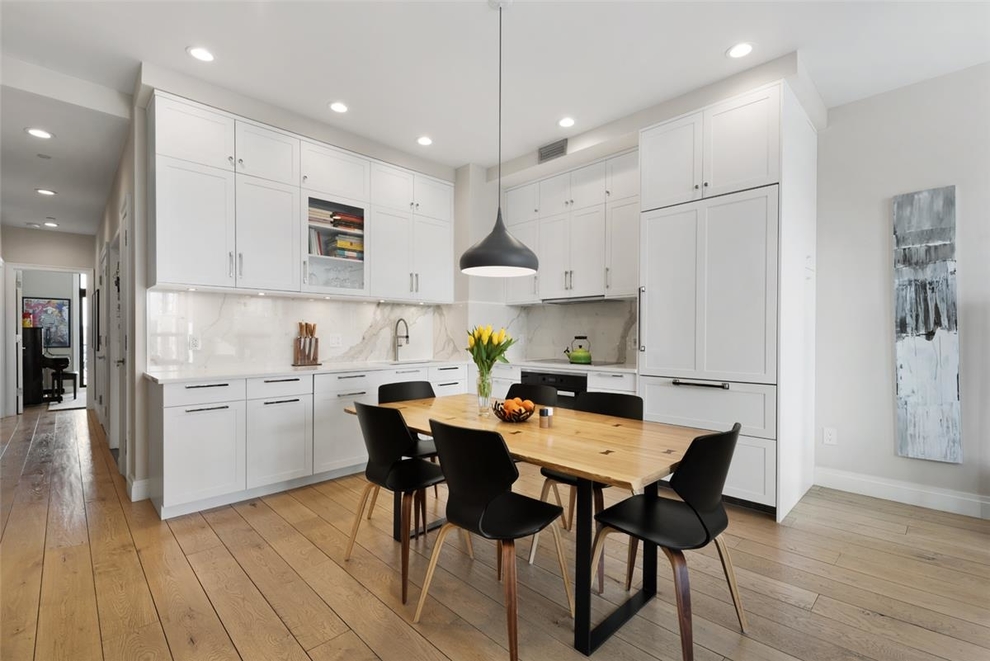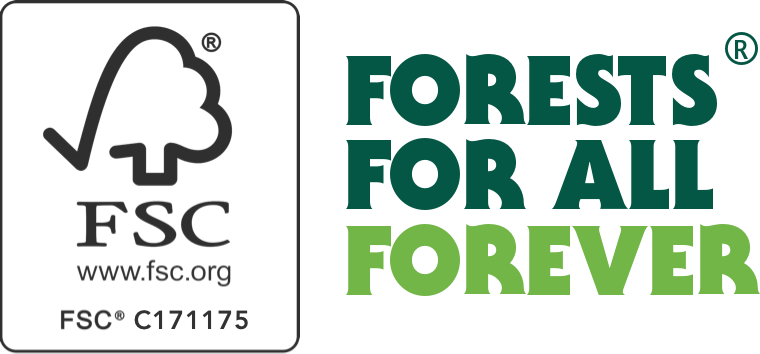Should You Prefinish Your Hardwood Floor?

All hardwood flooring, even the most damage-resistant species, requires coats of protective finish. Without it, floors will quickly begin to show signs of wear and tear; scratches, nicks, dents, and color changes. Additionally, a properly applied finish can add to the beauty of the wood by enhancing the wood grain.
The question, then, is not whether to apply finish, but when to apply it. Most manufacturers offer the option of prefinished flooring, with the finishes applied in the manufacturing facility, or unfinished flooring delivered in its natural state to be finished after installation. But what are the benefits of each?
The Finishing Process and Materials
First, it is critical to understand the finishing process and the materials used. A prefinished—or factory-finished—floor implies that each board has been finished individually, often first with a stain, and then with sprayed on coats of protective finish, most often of poly-urethane, but sometimes other materials. Each coat is allowed to dry before the next coat is applied, and the finished boards are then cured with aluminum oxide and heat in an oven, creating a hard acrylic finish.
By comparison, unfinished flooring is delivered and installed in its raw from. Only then is it lightly sanded, stained (if desired), and then coated with layers of protective finish, usually applied by brush or roller. Again, the materials may vary, with options including waxes, water- or oil-based polyurethanes, and penetrating oil sealers.
The Benefits and Negatives of Pre-Finished
Speed and ease are the names of the game with prefinished planks. As soon as the flooring has been installed, you can move the furniture in and start living in the space. That’s an appealing proposition to many people, especially when contemplating the alternative route of finishing the floors in place (see below).
Factory-applied finishes can be, in some cases, more durable than site-applied finishes. Some producers are utilizing UV-cured resin and nanoparticle coatings, or aluminum oxide, which are abrasion- and scratch-resistant, and not available for site application due to the equipment required.
On the downside, prefinished planks generally are micro-beveled, meaning that a thin 45-degree cut runs the length of each side of the board. When installed side-by-side, this creates a small “V” shape between planks. Unfinished boards, by comparison, are square-edged, so they meet up in a smooth, tight-seamed relationship with one another.
The reason for this disparity is that prefinished boards may have slight differences in their heights. And since they can’t be sanded after installation to even out those height disparities (without removing the finish coats that have already been applied), the micro-bevel is utilized, acting to as a means to “hide” those slight variations. The downside is that the bevels create visible seams between planks.
Unfinished planks, on the other hand, receive a sanding after they’ve been installed but before the finishes are applied. This equalizes any height variation, and the finish then fills the paper-thin gaps between the boards, making for a virtually seamless floor.
The Pros and Cons of Unfinished
Other positives of going the unfinished route include an aesthetic nod. Some purists feel that an unfinished floor, sanded and finished on-site at the hands of a skilled flooring installer contains a beauty and warmth that cannot be matched by a factory- or mill-based process. Additionally, finishing floors on site provides a uniformity of seal and finish, and the capacity to match new flooring with existing hardwood flooring or other interior elements. These same purists would argue that site-based work allows for a greater variety of finish options, including stain and color variations, as well as actual finish material choices.
This may be true in the case of larger manufacturers who are mass-producing their products, though smaller mills and producers will happily work with clients who seek to customize their prefinished options.
The primary negative of unfinished flooring is the time and effort needed to move through the finishing process. The initial sanding requires a hefty clean-up to remove all remnants of dust. Then each layer of finish requires drying time. And oil-based (and some water-based) polyurethanes produce noxious vapors that require a timeframe to dissipate, though there are some alternatives that do not contain these off-gassing volatile organic compounds.
This waiting game and displacement can be challenging in the context of new flooring being laid in an existing, lived-in home, though in the context of new construction, where it will only minimally slow the building process, this may be a more tolerable inconvenience.
Cost Comparison
Though unfinished hardwood planks generally cost less than prefinished, that savings is more than offset by the labor costs of the installation and finishing process. While a handy homeowner can potentially install a prefinished floor on his or her own, the know-how required for properly sanding and finishing your floors demands professional expertise, which costs money.
Conclusions
While each hardwood flooring option—unfinished and prefinished—offers advantages and disadvantages, one might be tempted to summarize the choice as one between speed and quality. But this is an overly simplistic analysis.
Speed does not necessarily need to subvert quality. Our standards of excellence in every detail of the production process result in the highest quality results regardless of the finish option. Our wide-width, prefinished planks result in fewer beveled seams, our in-house finish shop tailors color and material choices to our individual client’s personal aesthetics and desires, and our finish application techniques assure the most uniform coverage. But for those customers seeking the benefits of on-site finish application, we are equally prepared to provide the highest quality unfinished wide planks on the market.
Either way, Vermont Plank Flooring has you covered.







